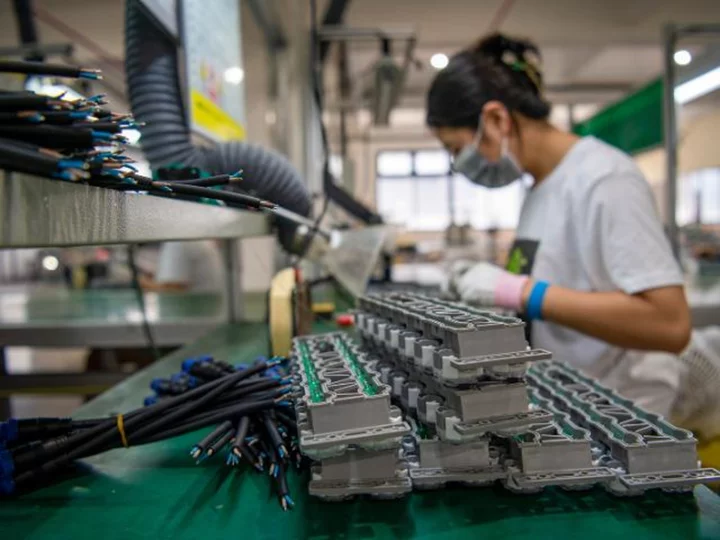The Federal Reserve's preferred inflation gauge cooled off last month, and consumers reined in some spending as the economy slows, according to data released Friday by the Commerce Department.
The Personal Consumption Expenditures price index rose 3.8% for the 12 months ended in May, which was down from the revised 4.3% annual increase seen in April. It marks the lowest level since April 2021. On monthly basis, prices were up a mere 0.1%.
Personal spending ticked up by just 0.1%, a more moderate pace than April's revised 0.6% growth rate. In May, consumers continued to put their dollars toward services — particularly for medical care and travel — while pulling back on goods purchases.
The core PCE index, which is more closely watched because it strips out volatile food and energy prices, inched down to 4.6% from 4.7%, landing at its lowest point since October 2021.
On a monthly basis, the core index was up 0.3%.
The PCE indexes are part of the Personal Income and Outlays report, which provides a more comprehensive look at shifts in prices, including how consumers respond to them and how much consumers are spending, bringing in and saving.
The report is watched like a hawk by the Fed, which earlier this month opted not to hike its benchmark rate for an 11th consecutive time, instead pausing to review the economic data, banking activity as well as the effects of monetary tightening.
"There were no fireworks within the Fed's favorite inflation report today," George Mateyo, chief investment officer for KeyBank, wrote in a statement. "Today's data shows economic resilience and the disinflationary narrative are becoming more evident, but additional proof is needed. Right now, the Fed's job is not clear cut. While they may not be done with rake hikes, perhaps they don't have much more work to do."
This story is developing and will be updated.









